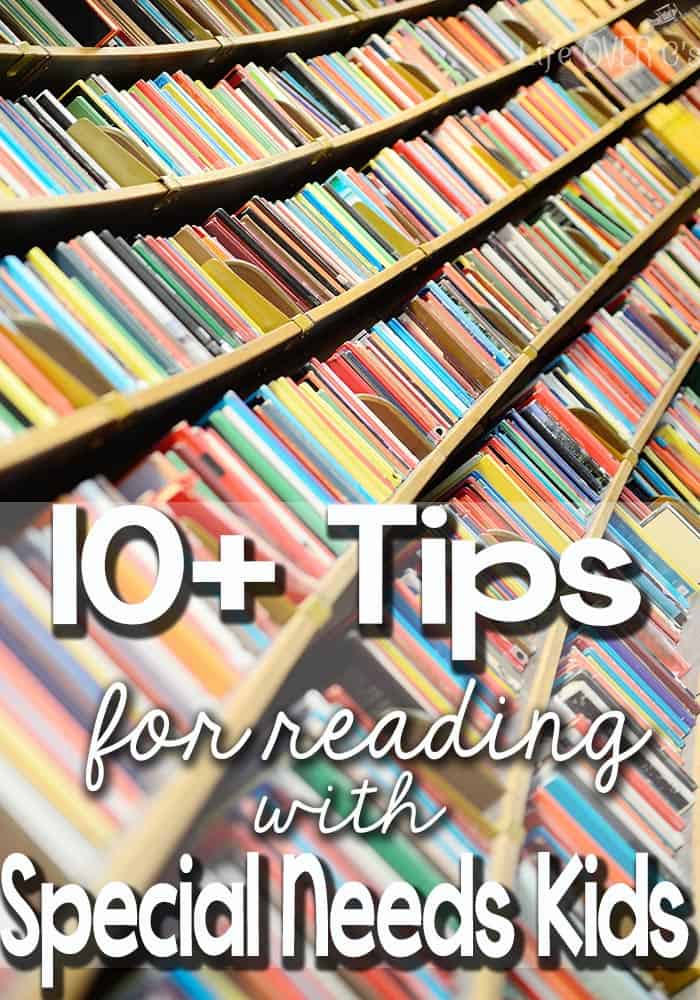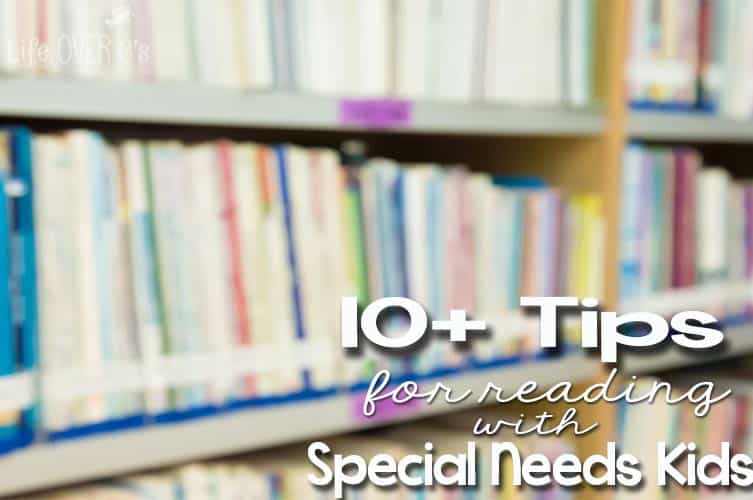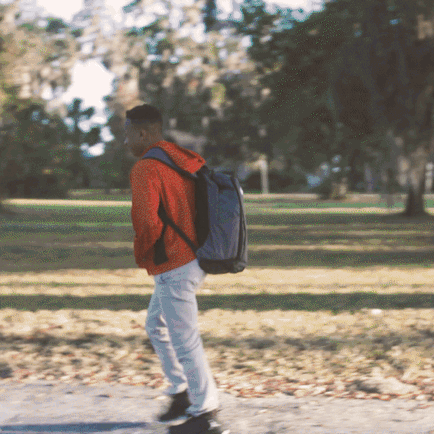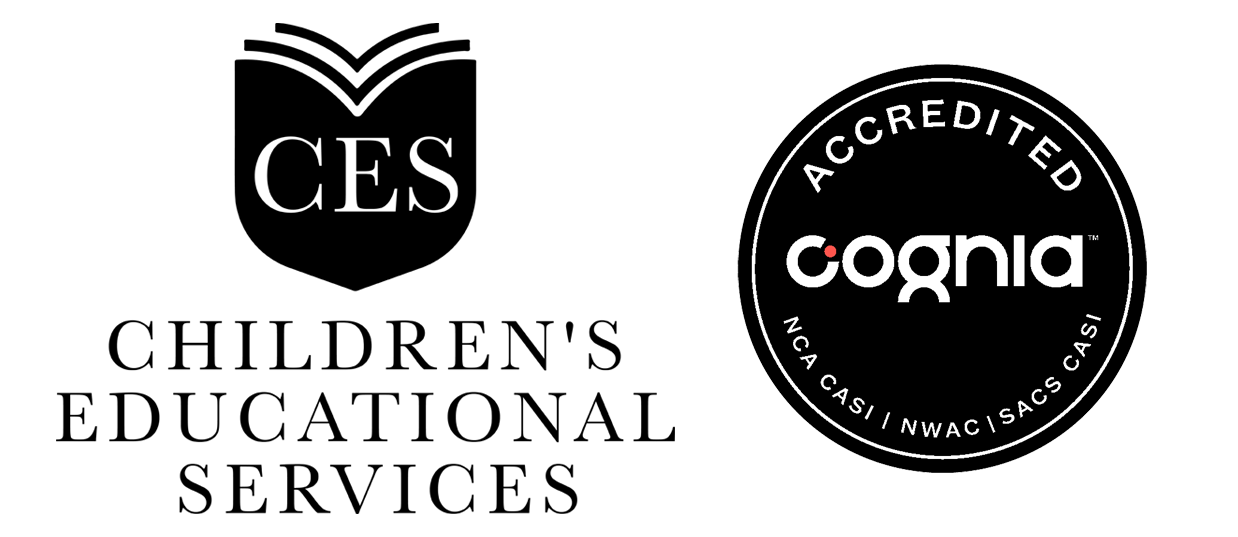I’m passionate about reading with my kids, so I love the theme for this week’s #PlayfulPreschool! Books! From activities using them to tips for reading them, we’ve got some great ideas for teaching a love of books with your preschoolers! Reading with your kids is the best thing that you could ever do for them and I am committed to instilling a love for reading into all of my kids. I will be absolutely honest though, reading with my special needs preschooler takes a lot more forethought than reading with my other kids. So to help me, and hopefully you, I’ve compiled a list of tips for reading with special needs kids.

When reading with kids, it usually makes a pretty solid progression from pointing to pictures, to naming those pictures, to listening to short storylines, longer storylines and then the journey to independent reading. I’ve traveled that journey with three of my daughters, but due to my littlest one’s developmental delay, that journey has not been so picture perfect.
Shiloh finally became aware of books at about 2 1/2 years old, but she wasn’t talking yet and didn’t understand a lot of what we were saying to her. So we would just flip through the pages with me mentioning here and there what the pictures were.
At about 3-years-old we reached the pointing stage and she could point to some very basic pictures of animals and people.
Now, at 4 years and 2 months old, we are at the mimicking stage. She will, occasionally, repeat what I say to her about the pages.
Because we are taking so long to progress, a lot of books that are intended for preschoolers, do not fit her learning capabilities. Instead, we have to adapt our reading time to fit her abilities and interests.
Here are some ways that we are doing that & some ideas from other bloggers as well! (Of course, these tips can be used with any beginning reader.)
10+ Tips for Reading with Special Needs Kids
1) Use any picture book as an “I Spy”. Ask your child, “Do you see _____?” Give them a moment to look and respond. If they are not able to respond, you can answer the question yourself in a full sentence. “I see the _____ here.” Then point to the object. If your child is ready for more information you can use more descriptive words. “I see the fuzzy cat chasing the red ball.” Keep the sentences simple. There are also many Look & Find books that are perfect to use this way.
2) “Focus on books that are repetitive. The repetition give kids a chance to work on fill-ins. For example, in the book “Brown Bear, Brown Bear What Do You See?” by Eric Carle, the same phrases are used on every page so kids have a chance to hear it over and over and then start to either say it with the reader or fill it in when the reader pauses.” Pam from Mrs. P’s Specialties
3) “Books based on songs or finger plays (ex: “Itsy, Bitsy Spider” or “5 Little Monkeys”) are another great way to work on fill-ins, sequencing with pictures, labeling or pointing to actions, etc.”Pam from Mrs. P’s Specialties
4) “Give choices to describe what is going on the page for example – “Is the girl jumping or is the girl swimming?” Whilst pointing at the girl on the page. It’s working on introducing pronouns and then we’ve started to add in adjectives as well.” Rainy Day Mum
5) “My daughter had vision issues and patched one eye for several years. She really struggled with illustrations that were detailed and muted. It was much easier for her to connect with books that had a white background and high contrasting colors. The Very Hungry Caterpillar by Eric Carle is the first book that came to my mind.” Amanda from The Educator’s Spin on It
6) “Books with [real] photographs are great. One of our favorites was My First Colors by DK publishing.” Jodie from Growing Book by Book
7) “Anything interactive. I add pieces to books to help with this.” You can check out how Caitlin from Learning Ahoy adds velcro pieces to books to make otherwise passive books, interactive.
8) “I love using magnetic books with my non-readers and beginning readers. The magnetic pieces that come with the books allow me to work on vocabulary, letters and numbers with my students. If my students can’t read the books just yet, they can at least match the pieces to pictures in the books, and this increases their interest and engagement in reading books.” ~ Nicole from Adventures in the ATC
9) Use textured books to give kids sensory input and to keep them engaged during the story. The “That’s Not My….” series from Usborne books is perfect for this!
10) Use puzzle books to keep hands busy and minds engaged as you read the story.
11) If you can’t get your child to sit at all, you can listen to books on audio. While this doesn’t help with seeing words on the page, it does help to widen their vocabulary, build listening skills and engage their imagination. Even better if you can get them to listen to the story and look at the book.
12) Prepare the environment. Create a place that encourages your child to be restful and pay attention. Loud, rowdy places will be much more difficult than a quiet, cozy place. Perhaps turn on some quiet instrumental music or a white noise machine in the background to help drown out excess distractions. We always try to read on a cozy pillow or with a soft blanket.
13) Just keep trying. Some attempts will be better than others, but don’t give up!

Source: Lifeovercs


